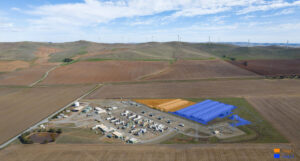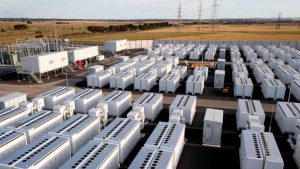Gina Rinehart – Australia’s richest woman and a financial supporter of one of the country’s most fiercest critics of climate and renewables policy – is to have a 30MW solar farm constructed at her main iron ore mining operations to help it cut emissions.
Rinehart’s Roy Hill Iron Ore – 70 per cent owned by Hancock Prospecting – reveals the plans for the solar farm in a revised submission to the state’s Environmental Protection Authority outlining its Greenhouse Gas Management Plan as it seeks to lift production.
It says it has decided to build the 30MW solar farm in co-operation with Alinta Energy, the utility that operates the local grid, and which is completing the nearby 60MW Chichester solar farm for the Fortescue iron ore operations that is served by the same network.
The decision by Rinehart’s company to turn to solar is a little ironic given her support for coal power, her campaigns against renewables, such as this call to stop wind power, (subscribers only) and her financial support of those who have campaigned against them, such as the Institute of Public Affairs.
But it is inevitable. Not only do all companies have an obligation to cut emissions as best they can, it is also clear that renewables offer a cheaper alternative to fossil fuels, particularly in remote areas where mining operations have been dependent on expensive gas or even more expensive diesel.
Roy Hill has already benefited from increased reliability – and presumably reduced costs – brought about by Alinta’s installation of a ground-breaking big battery next to the Newman gas station, and Fortescue is planning to build another 150MW of solar and another big battery as the network is extended to new mining operations.
Fortescue is also looking to add a major wind farm to power its operations and chairman Andrew Forrest has outlined an extraordinary vision to build more than 235 gigawatts of green hydrogen capacity across the globe.
Other big iron ore miners such as BHP and Rio Tinto are also looking to add renewables to their operations, both to cut emissions and lower costs, and BHP has already torn up billion dollar coal contracts in Chile as it moves its copper mining operations to 100 per cent renewables.
BHP on Tuesday also announced it had signed a 10-year deal with WA’s biggest solar farm to supply half of the electricity needs of its nickel refinery at Kwinana West.
Other miners are also shifting to renewables. Element25, also in the Pilbara, is looking for majority renewables supply to build a manganese metals facility and Oz Minerals, is looking for wind and solar to power a huge new nickel project near the border of W.A. and the Northern Territory.
Roy Hill began exploring new options nearly two years ago when, as we wrote at the time, it placed an ad on Seek for a principal advisor whose main roles will be to conduct research, analysis and recommendations to “increase energy efficiency and reduce carbon emissions through alternative forms of fuel and energy.”
Roy Hill’s EPA submission canvasses other potential emissions reduction initiatives, but rejects most of them as not feasible, including the electrification of its haulage fleet (in contrast to Fortescue which is doing exactly that), and using solar power to create and store hydrogen which could then be transported to fuel cells at dewatering bores to power bore pumps by electrolysis.
Its proposed solar farm will be completed by the 2024 financial year.
In the meantime, Roy Hill – like so many other companies – is looking for an increase in its emissions baseline that will allow to increase the amount if can emit without penalty – but only if there is an increase in production from the Roy Hill mine. Companies can do this under Australia’s lax Safeguard Mechanism.










